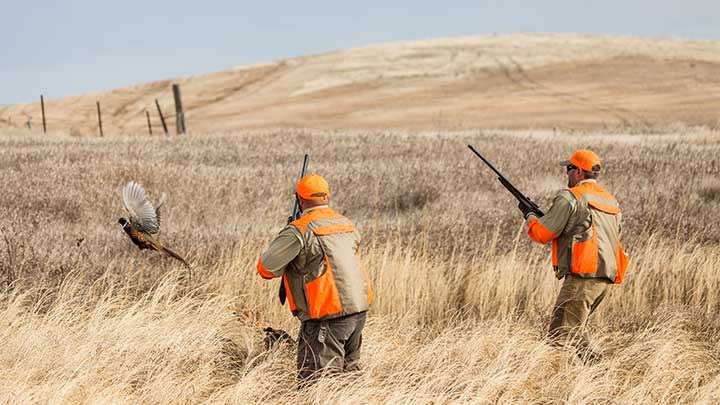
by Brian McCombie - Thursday, December 24, 2020

As reported by a wealth of media sources, there has been a big increase in hunting participation this year across the nation. Those same reports identify an interesting, if not surprising reason for this spike in hunting: the COVID-19 pandemic. In fact hunting sales and numbers of sportsmen and women in the field ticked up as early as the spring turkey season, so some increase this fall might have been expected, but not the numbers we’re seeing.
Here’s a quick look at the good news.
In Idaho, an Associated Press report at idahostatejournal.com quotes the Department of Fish and Game as selling nearly 62,000 more hunting and fishing licenses than in 2019 through the end of October 2020.
That’s just the start of things—and why not? Hunting provides a lot of positive outcomes amid a pandemic.
“All of those things that hunting offers to people and the varied reasons people hunt all fit in with the pandemic,” Louis Porter, Vermont’s fish and game commissioner, told Fox News.
In Michigan, the Associated Press reports: “More than 545,000 hunters had bought [hunting] licenses through Nov. 11, nearly 10 percent more than at the same point in 2019, according to the state Department of Natural Resources. Significantly, the number getting licenses for the first time in at least five years—if ever—has jumped 80 percent, to nearly 84,500. The state’s total is up 20 percent for female hunters and 18 percent for those ages 9 and younger.”
In Pennsylvania, the game commission reports a preliminary overall increase in hunting licenses sales of 5 percent, according to a report by the Beaver County Times.
In Wisconsin, according to WXOW in Lacrosse, hunting sales are up 10 percent.
In California, capradio.org reports a 10 percent increase.
Maine is up 8 percent, according to WGME.com.
Montana has seen a gain of 15 percent, according to the Bigfork Eagle.
The increase in hunting participation is apparently being felt across the hunting industry, too, including among game meat processors who are reportedly swamped with business.
“Shaneesta Jessop of Hamilton Packing said she had never seen anything like it in the six years that she’s worked there,” reported the ravallisrepublic.com in Hamilton, Mont. “‘This is probably one of the biggest years that we’ve seen,’ she said. ‘I think there’s a combination of reasons. There aren’t as many places who process wild game. I know we’re also seeing a lot of out-of-state hunters. And, with COVID, I think there are a lot of people who want to fill their freezers this year.”
Since hunting seasons continue in most states, agencies won’t release final license final license sales numbers for some time. However, I’ve heard preliminary estimates as high as a spike of 3 million more hunting licenses sold nationally over the 11.4 million licenses issued for the 2016 season (according to U.S. Fish and Wildlife Service records); that would be a jump of 26 percent, and it would provide a nice glimmer of hope for hunting’s future.
Whether these pandemic-inspired hunters will return to the field next year and beyond remains to be seen. But it is certainly a good sign that, when faced with a situation like COVID-19, millions of Americans turned to hunting as a way to practice self-reliance, to harvest healthy meat and to get outdoors. This spike in hunting participation can only help sustain our hunting heritage.
E-mail your comments/questions about this site to:
[email protected]
